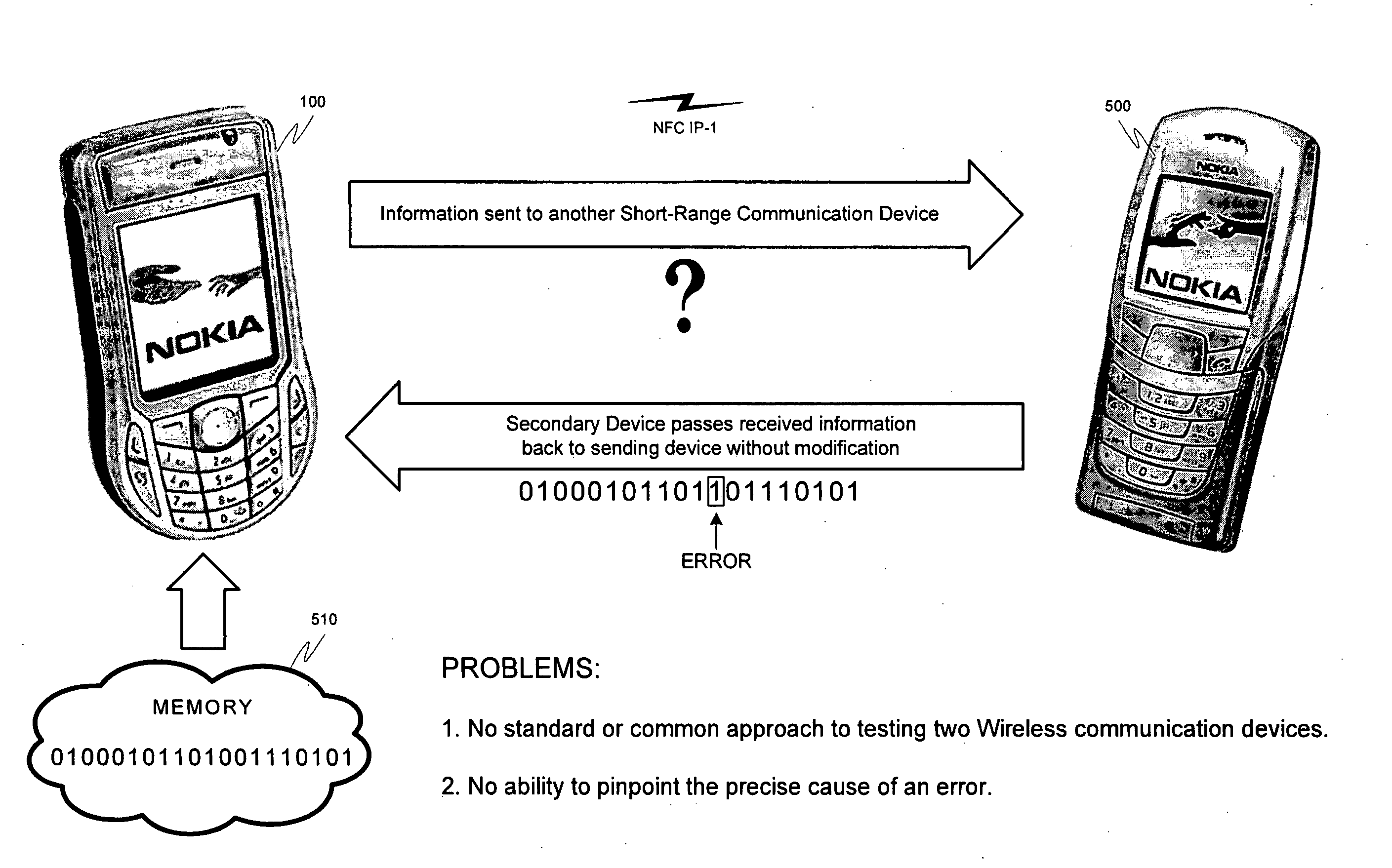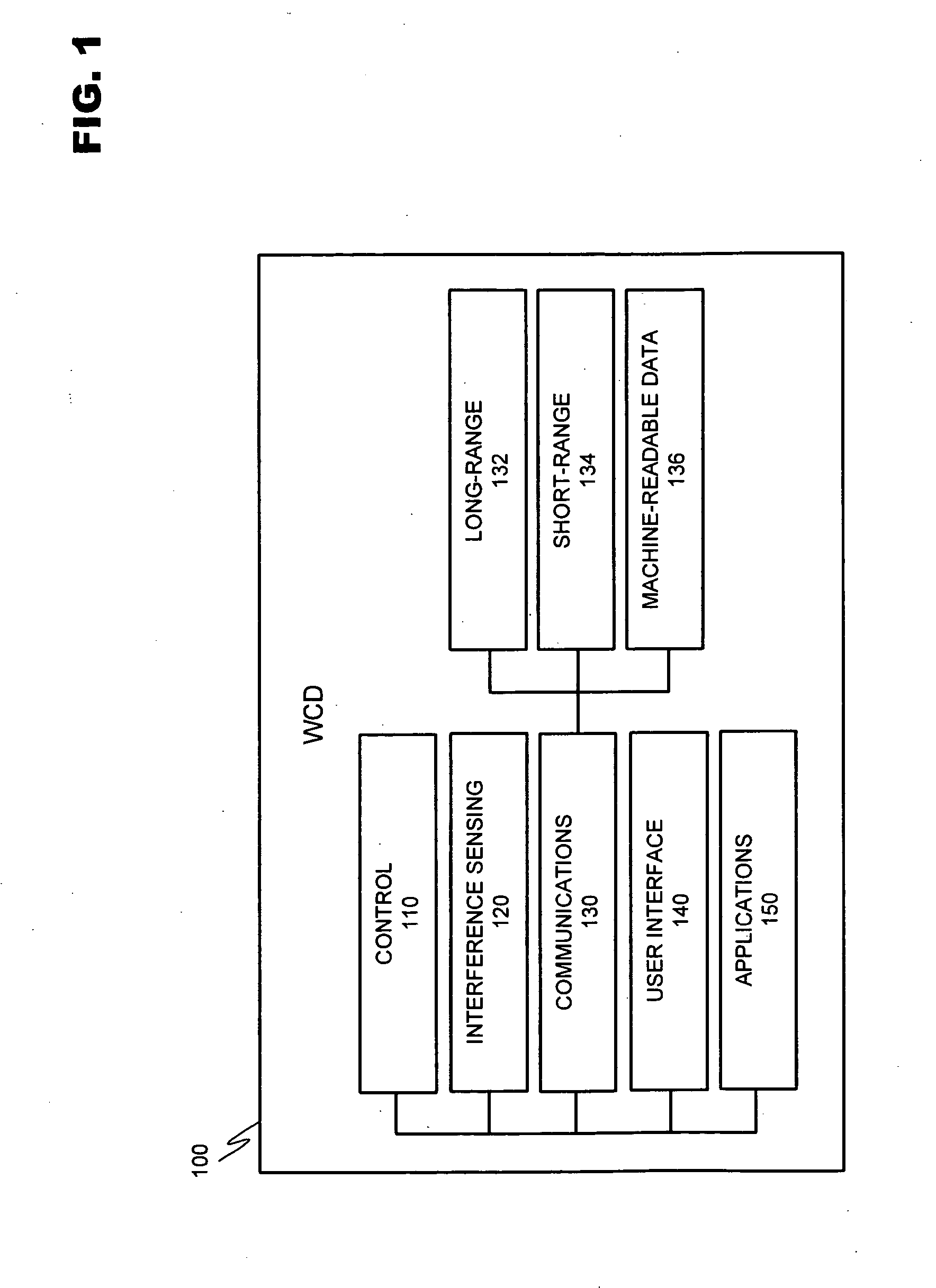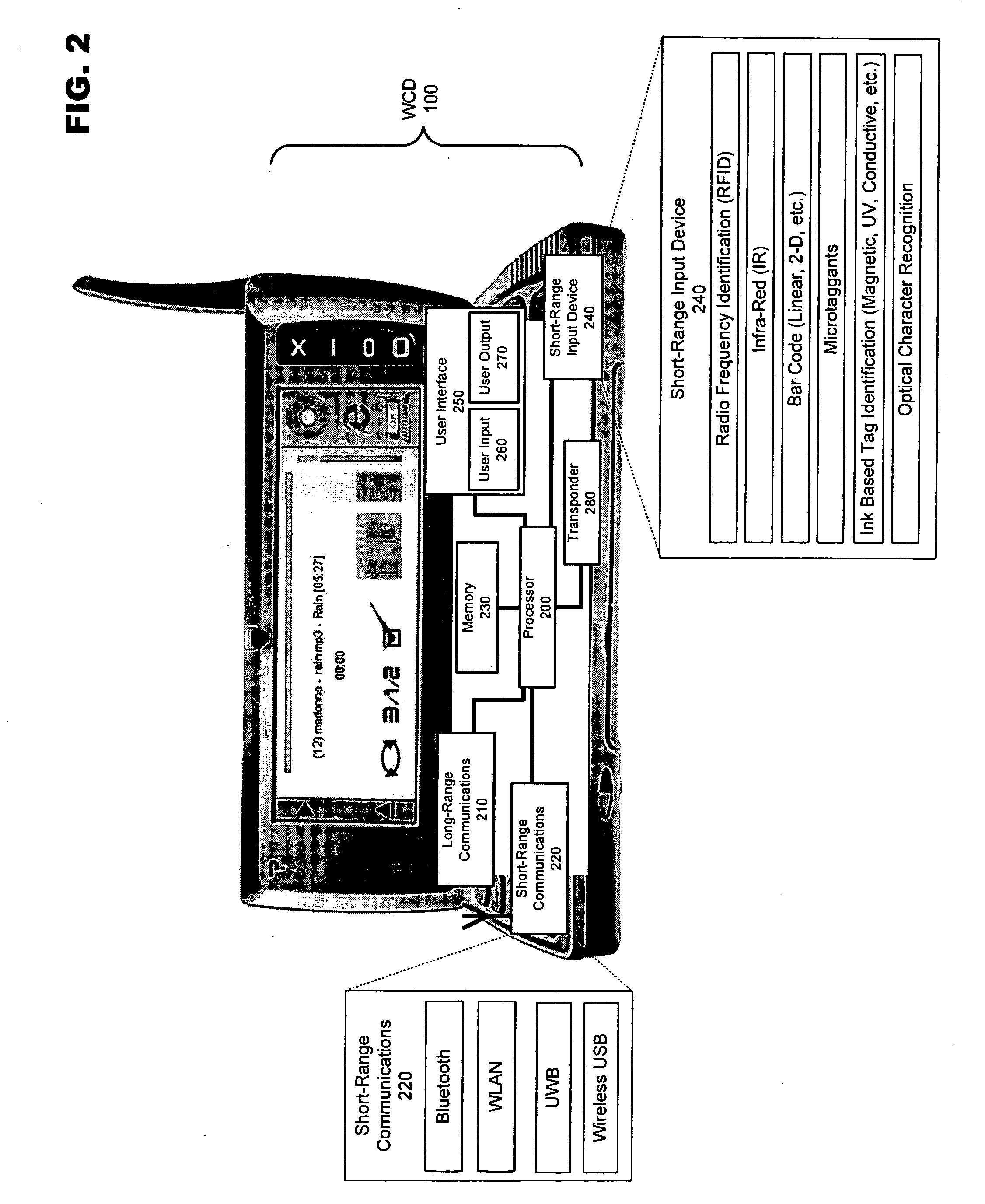Optimized RFID/NFC BER testing
a technology of rfid/nfc ber and testing mode, applied in the field of wireless communication, can solve the problems of wasting resources applied to provide information, cellular network may not be appropriate for all data applications, and may not be suitable for all data applications
- Summary
- Abstract
- Description
- Claims
- Application Information
AI Technical Summary
Benefits of technology
Problems solved by technology
Method used
Image
Examples
Embodiment Construction
[0029] While the invention has been described in preferred embodiments, various changes can be made therein without departing from the spirit and scope of the invention, as described in the appended claims.
I. Wireless Communication Device
[0030]FIG. 1 discloses an exemplary modular layout for a wireless communication device usable with the instant invention. WCD 100 is broken down into modules representing the functional aspects of the device. These functions may be performed by the various combinations of software and / or hardware components discussed below.
[0031] Control module 110 regulates the operation of the device. Inputs may be received from various other modules included within WCD 100. For example, interference sensing module 120 may use various techniques known in the art to sense sources of environmental interference within the effective transmission range of the wireless communication device. Control module 110 interprets these data inputs and in response may issue co...
PUM
 Login to View More
Login to View More Abstract
Description
Claims
Application Information
 Login to View More
Login to View More - R&D
- Intellectual Property
- Life Sciences
- Materials
- Tech Scout
- Unparalleled Data Quality
- Higher Quality Content
- 60% Fewer Hallucinations
Browse by: Latest US Patents, China's latest patents, Technical Efficacy Thesaurus, Application Domain, Technology Topic, Popular Technical Reports.
© 2025 PatSnap. All rights reserved.Legal|Privacy policy|Modern Slavery Act Transparency Statement|Sitemap|About US| Contact US: help@patsnap.com



